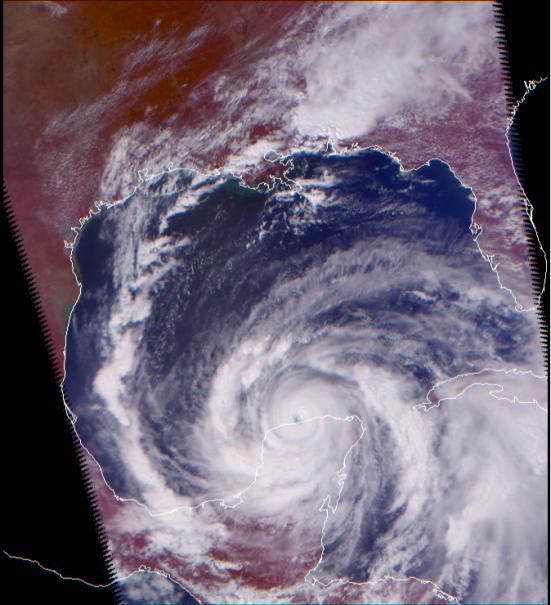Hurricane Isidore

| PIA Number | PIA00350 |
|---|---|
| Language |
|
A view of Hurricane Isidore from the Atmospheric Infrared Sounding System (AIRS) on Aqua.
At the time Aqua passed over Isidore, it was classified as a Category 3 (possibly 4) hurricane, with minimum pressure of 934 mbar, maximum sustained wind speeds of 110 knots (gusting to 135) and an eye diameter of 20 nautical miles. Isidore was later downgraded to a Tropical Storm before gathering strength again.
This is a visible/near-infrared image, made with the AIRS instrument. Its 2 km resolution shows fine details of the cloud structure, and can be used to help interpret the other images. For example, some relatively cloud-free regions in the eye of the hurricane can be distinguished. This image was made with wavelengths slightly different than those seen by the human eye, causing plants to appear very red.
In the near future, weather data derived from these images will allow us to improve our forecasts and track the paths of hurricanes more accurately. The AIRS sounding system provides 2400 such images, or channels, continuously.
The Atmospheric Infrared Sounder Experiment, with its visible, infrared, and microwave detectors, provides a three-dimensional look at Earth's weather. Working in tandem, the three instruments can make simultaneous observations all the way down to the Earth's surface, even in the presence of heavy clouds. With more than 2,000 channels sensing different regions of the atmosphere, the system creates a global, 3-D map of atmospheric temperature and humidity and provides information on clouds, greenhouse gases, and many other atmospheric phenomena. The AIRS Infrared Sounder Experiment flies onboard NASA's Aqua spacecraft and is managed by NASA's Jet Propulsion Laboratory, Pasadena, Calif., under contract to NASA. JPL is a division of the California Institute of Technology in Pasadena.
Image Credit: NASA/JPL
